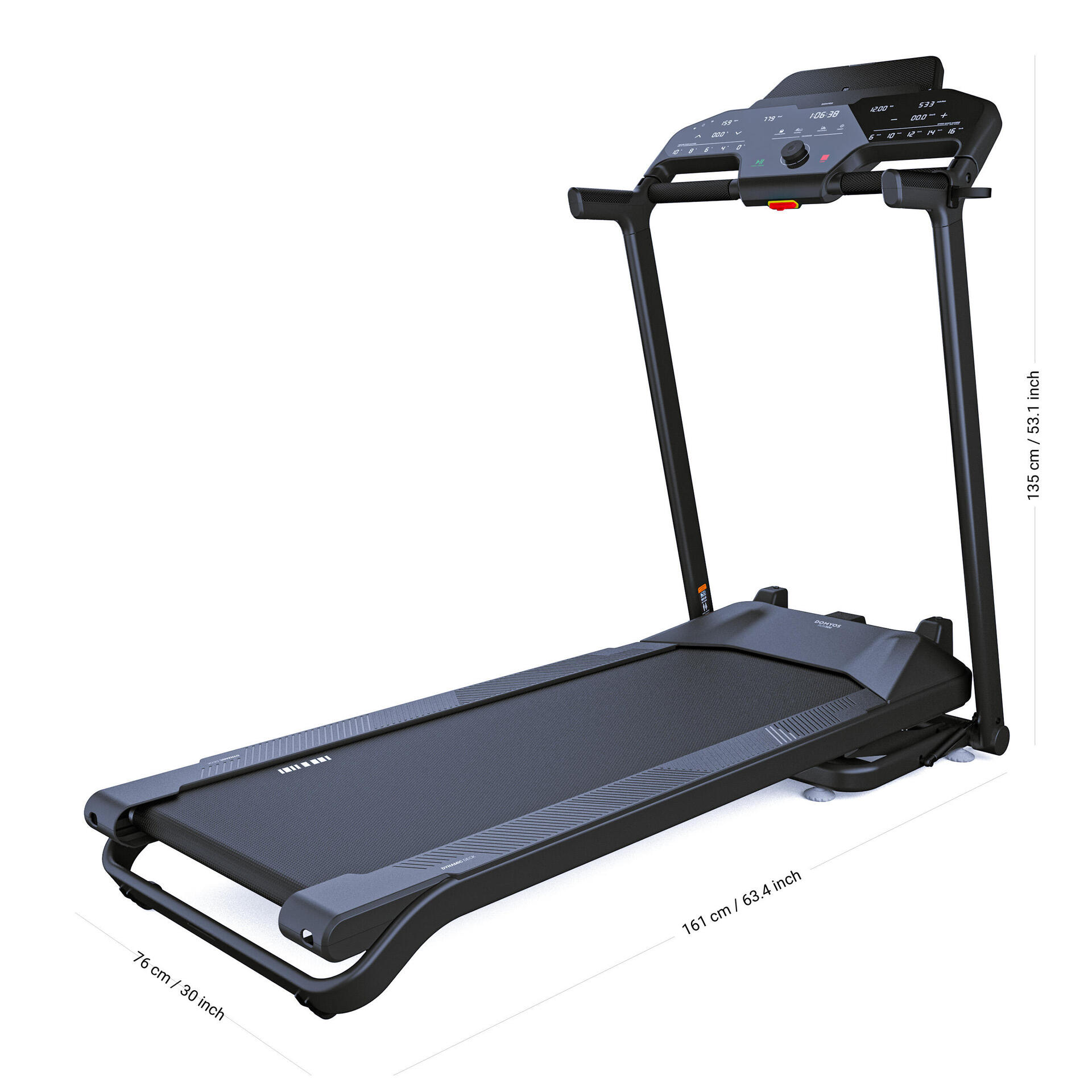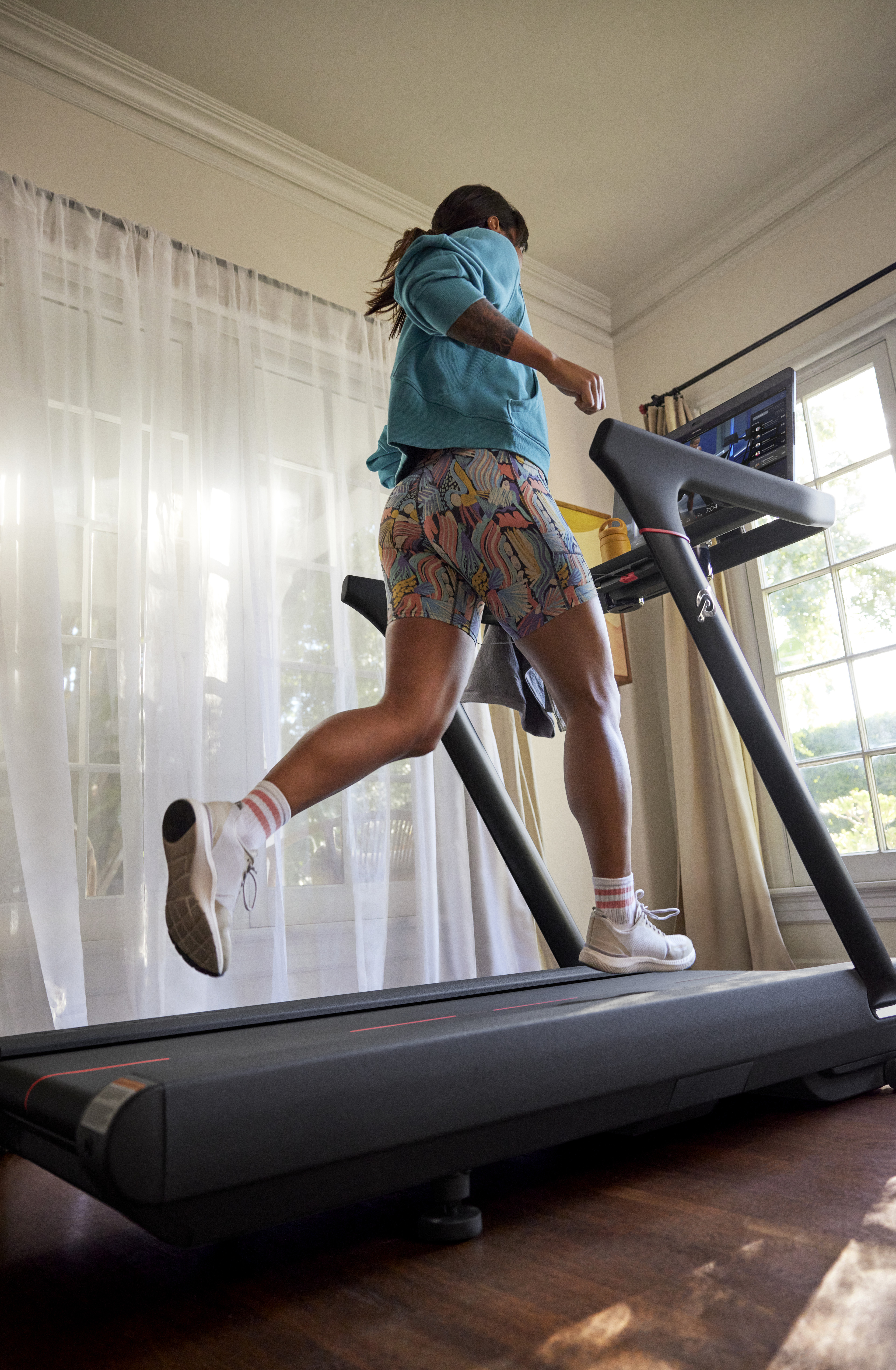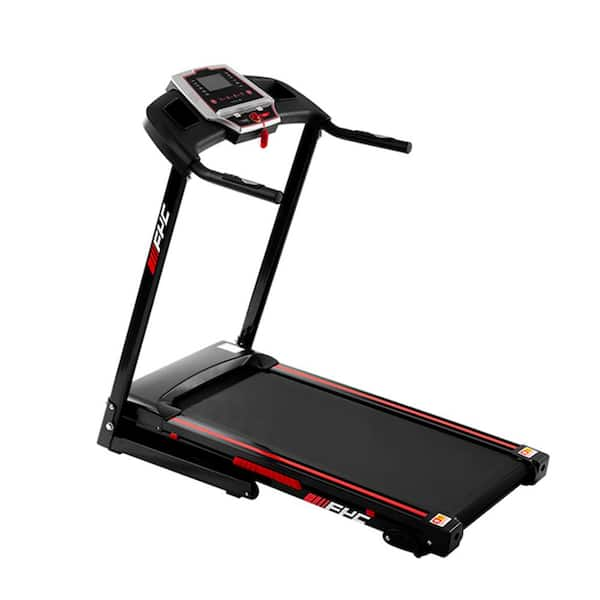Walking Pads vs. Traditional Treadmills: Which One Wins?
Your choice between a walking pad and traditional treadmill (Lightweight Space saver treadmill) depends on your specific needs. Walking pads excel at space efficiency and portability, making them ideal for apartments and home offices, while traditional treadmills offer superior performance features for serious training. If you're focused on walking workouts and space-saving, choose a walking pad. For running and advanced fitness features, opt for a traditional treadmill. A deeper analysis of features, costs, and safety will help you make the best decision

Key Takeaways
- Walking pads excel in space efficiency and storage, while traditional treadmills offer superior performance features for serious fitness enthusiasts.
- Traditional treadmills support speeds up to 12 mph with incline options, whereas walking pads max out at 3.7 mph.
- Walking pads cost $300-800 with minimal maintenance, while traditional treadmills range from $500-3,000+ with higher upkeep needs.
- Traditional treadmills provide comprehensive safety features like wide belts and handrails, while walking pads require more independent balance.
- Walking pads are ideal for apartment dwellers and casual exercisers, while traditional treadmills suit dedicated runners seeking advanced training options.

Key Differences Between Walking Pads and Traditional Treadmills
While both devices serve as indoor walking and running solutions, walking pads and traditional treadmills differ considerably in their design, functionality, and intended use. Walking pads feature a minimalist, slim profile with design aesthetics that prioritize space efficiency and storage. You'll find they're engineered primarily for walking exercises up to 3. Explore treadmill reviews On Top Treadmills Reviews.7 mph, making them ideal for light cardio and standing desk integration. Their target audience includes apartment dwellers and home office workers seeking low-impact movement
Traditional treadmills, conversely, offer robust frames and powerful motors supporting speeds up to 12 mph. You'll notice their extensive control panels, pre-programmed workouts, and incline capabilities. These machines cater to serious runners (Portable treadmills with incline) and fitness enthusiasts who demand performance features, stability at high speeds, and varied workout options

Space-Saving Features and Storage Solutions
Space optimization stands as a defining advantage of walking pads over traditional treadmills. Their compact design. Best treadmill deals allows you to store them under beds, behind doors, or inside closets when not in use. Most walking pads feature a folding mechanism that reduces their footprint by up to 70% compared to standard treadmills

You'll find that walking pads' portable storage capabilities make them ideal for apartments, small homes, or shared living spaces. They're typically equipped with built-in wheels for easy transport and weigh considerably less than traditional treadmills. When selecting a storage location, ascertain there's adequate ventilation and protection from moisture. For safety, always verify that the locking mechanisms are properly engaged when folding or unfolding your walking pad, and keep the storage area free from obstacles.
Performance Capabilities and Workout Options
Despite their compact size, walking pads offer distinct performance capabilities that suit specific workout goals. You'll find they typically reach speeds of 3 (Manual treadmill). Compact treadmills That save space.5-4 mph, making them ideal for walking workouts and light jogging. However, traditional treadmills deliver superior performance metrics, with speeds up to 12 mph and incline options up to 15%
When it comes to workout variability, traditional treadmills have the edge. They feature pre-programmed workouts, interval training options, and heart rate monitoring. You can challenge yourself with hill climbs, sprint intervals, and customized fitness programs. Walking pads, while more limited, excel at steady-state cardio and low-impact exercise. They often include basic speed controls and distance tracking, though they lack the advanced training features you'd find on full-sized treadmills.
Cost Analysis and Long-Term Value
When comparing initial purchase costs, you'll find walking pads typically range from $300-800, whereas traditional treadmills start at $500 and can exceed $3,000 for premium models (Speed) - Discover Walking Pads At Top Treadmills Reviews. While walking pads offer a lower entry price point, you'll need to weigh their limited functionality compared to full-featured treadmills
.png)
Maintenance costs also factor into long-term value. Walking pads generally require less maintenance due to their simpler mechanisms and fewer electronic components. Traditional treadmills need regular belt lubrication, motor maintenance, and potential electronic repairs. However, they're built for higher durability and longer lifespan, often lasting 7-10 years with proper care. Walking pads may need replacement sooner, typically lasting 3-5 years under regular use, making the total cost of ownership more comparable over time.
Safety Features and User Experience
Both walking pads and traditional treadmills incorporate distinct safety mechanisms that shape the overall user experience. Traditional treadmills feature wider belts, sturdy handrails, and emergency stop buttons that you can quickly access (Home workout equipment). You'll also find safety keys that automatically shut off the machine if you fall
Walking pads prioritize user convenience with their compact design but maintain essential safety features. You'll notice smart speed controls (Affordable Treadmills) that respond to your walking patterns, and most models include anti-slip surfaces and side rails. However, the absence of traditional handrails means you'll need to maintain better balance independently
When choosing between the two, consider your comfort level with safety mechanisms - Space Saver Treadmill. If you require more stability support, a traditional treadmill's thorough safety features might better suit your needs

Frequently Asked Questions
Can Walking Pads Be Used Outdoors or in Different Weather Conditions?
You shouldn't use walking pads outdoors as they lack proper weather resistance and durability - Best treadmill deals - Treadmills. Most models aren't designed for outdoor use and can be damaged by moisture, heat, or environmental elements
How Long Do Walking Pad Motors Typically Last Compared to Traditional Treadmills?
You'll find walking pad motors typically last 3-5 years, while traditional treadmill motors can reach 7-10 years. The motor lifespan difference stems from durability comparison in construction and power specifications.
Are Walking Pads Suitable for Multiple Users With Different Heights?
While 85% of walking pads accommodate users between 4'10" and 6'2", you'll need to verify your model's specific user height adjustment ranges for safe operation and ideal user compatibility. (Space-Saving Treadmill Ideas)
Do Walking Pads Require Special Cleaning or Maintenance Procedures?
You'll need basic cleaning techniques like wiping the belt with a damp cloth and occasional lubrication. Regular maintenance tips include belt alignment checks and keeping the surface debris-free for safe operation.
Can Walking Pads Integrate With Fitness Apps and Smart Home Systems?
Over 80% of modern walking pads offer app integration through Bluetooth connectivity. Foldable Space Saver Treadmill. You'll find smart compatibility with popular fitness platforms like Strava, Apple Health, and many smart home ecosystems
Conclusion
Like choosing between David and Goliath, your decision between a walking pad and traditional treadmill depends on your specific needs. You'll find walking pads excel in space efficiency and portability, while traditional treadmills offer more robust features and higher performance capabilities. Consider your available space, workout intensity requirements, and budget when making your choice. Either option can be your pathway to fitness success.


